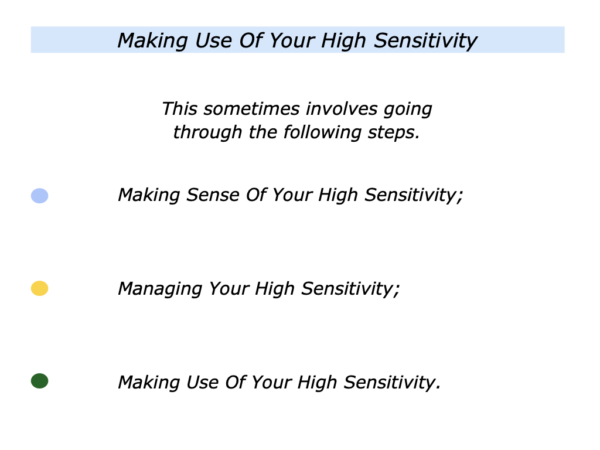
There are many ways to do fine work. One approach involves making good use of your high sensitivity. Different people are sensitive to different things.
Some individuals may be affected by physical events – such certain sounds, images, smells or other sensations. Some may be affected by psychological events – such as people behaving in certain ways.
Some people are affected by events that help or hurt their values. Some are affected by seeing positive or negative patterns that have consequences for people or the planet.
Some people learn how to use their sensitivity in a positive way. Some learn how to manage it. Some find it difficult to deal with the emotions that are triggered by their sensitivity.
The following sections explore some ways to manage such experiences. Let’s explore these themes.
Making Sense Of
Your High Sensitivity
Elaine Aron introduced many people to this theme in her book The Highly Sensitive Person. Sensitivity is what makes us human. It enables us to enjoy life, be empathetic and encourage others.
Every person is different, however, and is sensitive to different kinds of experiences. Sometimes we react in positive ways. Sometimes we react in negative ways.
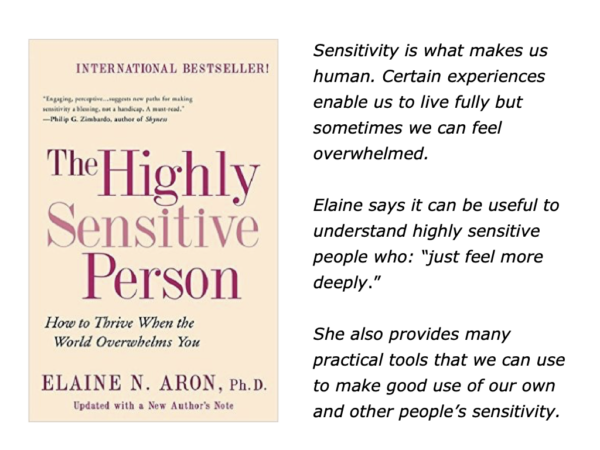
Great workers often learn how to use their sensitivity. They translate their experiences into ways of encouraging others, playing music, creating beauty or doing other activities.
This approach calls for going beyond ignoring such signals or being afraid of being called a snowflake. People who learn how to manage their sensitivity can then use it to help other people.
Let’s return to your own life and work. You may be sensitive to certain kinds of physical or psychological sensations. These may include the following.
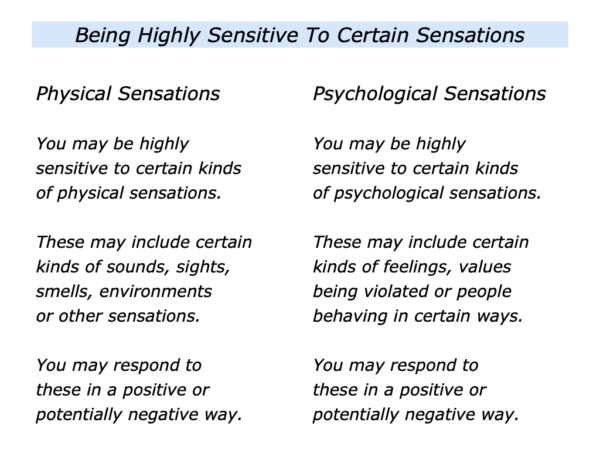
Managing Your
High Sensitivity
Imagine that you may be sensitive to certain physical or psychological stimuli. There are many approaches to manage these experiences. Let’s explore some of these themes.
You can accept your high sensitivity and
choose to manage it in positive ways
Imagine that you are highly sensitive to certain kinds of sounds. You can choose to accept this trait. You can then aim either:
To surround yourself with sounds that you like;
To avoid sounds that you don’t like;
To try to get used to sounds that you don’t like.
The same rule applies to other experiences where you have high sensitivity. This leads to the next approach.
You can aim to control what you
put into your body and soul
Individuals like to feel in control. They like to manage their environment, their decisions and their future. They also like to feel in control of what they put into their body and soul.
Everything is food. This includes the experiences, sounds, sights, emotions and other things we expose ourselves to each day. Bearing this in mind, you may want to take the follow steps. You may aim:
To put yourself into stimulating environments – such as stimulating sanctuaries or stimulating work places – rather than sapping environments;
To spend time with people who are encouragers and who give you positive energy – plus you also encouraging them – rather than with negative people who take energy;
To focus on positive things happening in the world – such as human beings finding solutions to challenges – rather than only on negative things.
You can focus on experiences that support rather than sap your body and soul. Sometimes this involves the next skills.
You can find ways to manage triggers
that lead to negative experiences
Individuals often respond to triggers which can lead to positive or negative experiences. Many people know the triggers they can help them to feel joyful, satisfied and happy. Sometimes it is harder to identify the triggers that lead to them feeling lost, depressed or unhappy.
You may, for example, believe it is important to follow certain values in your daily life and work. You may then get upset when seeing other people violating these values. Such an experience can act as a trigger for you going into a negative spiral.
One approach is to avoid putting yourself into situations where you may encounter negative triggers. If you do encounter one, however, you may want to take the following steps.
You can do something physical – such as to breathe deeply or move away from the triggering situation – to recentre. You can then aim:
To recognise the trigger – which may be a certain kind of experience or people behaving in a certain way – and buy time to think;
To focus on what you can control, clarify the possible ways forward and the potential consequences of each option;
To pursue your chosen strategy, get a quick success and do something to put yourself into a positive cycle rather than a negative cycle.
Imagine that you have developed the habit of putting positive things into your body and soul. This can then lead to the next step.
Making Use Of
Your High Sensitivity
Imagine that you are aware of the areas where you have high sensitivity. One approach is to then explore how you can make good use of these qualities.
Some therapists, for example, often have high degrees of empathy. They then use this to help troubled people to survive and then thrive. They do not use this empathy to become overwhelmed by other people’s worried.
Some people who care about life on Earth use this emotion to share stories about how others are healing and improving the planet. They do not allow this caring to drive them into depression.
The Verywell Mind website describes some of the qualities shown by highly sensitive people. Here is an extract from the website.
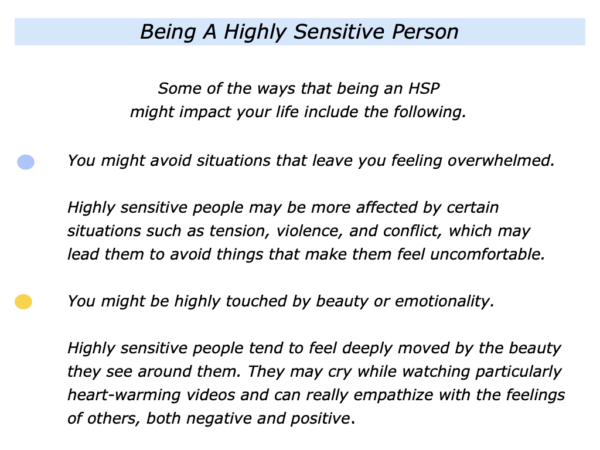
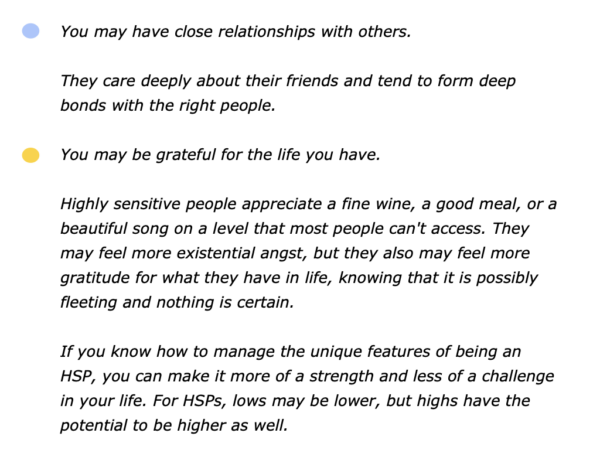
Let’s return to your own life and work. Can you think of specific area where you may be highly sensitive? Looking ahead, you may want to explore the following themes.
How can I try to make good use of my high sensitivity in this area? How can I use it in a positive way? What may be the benefits – both for yourself and other people – of taking these steps?
If you wish, try tackling the exercise on this theme. This invites you to complete the following sentences.
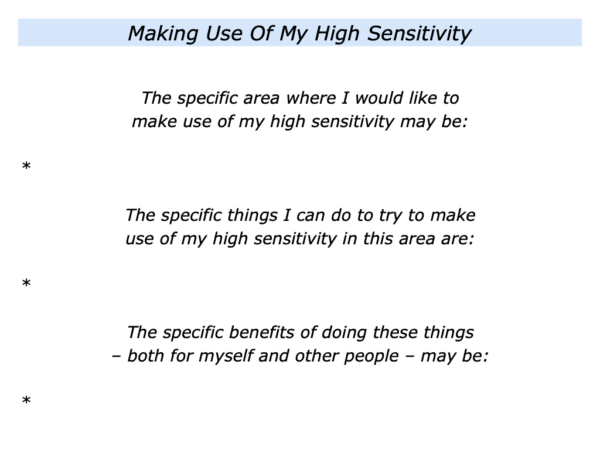






Leave a Reply